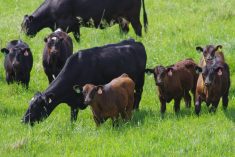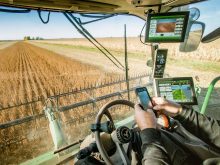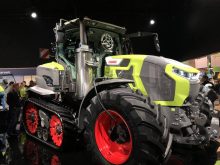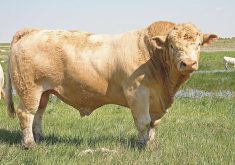Each grazing management year comes with opportunities to make a difference and learn new or improve techniques.
“Many of the skilled grazing managers I talk to are real systems thinkers,” says Grant Lastiwka, forage, grazing and beef specialist with Alberta Agriculture and Rural Development. “Just by listening to how they put the pieces together, I get creative ideas on how to address some of the grazing projects I am working on.”
Excellent grazing management is a complicated system, and every year is different. While that is true, Jim Gerrish, a wise grazing mentor, says it’s simpler than that. He says, “It takes grass to grow grass. Keep working on building the best ‘green solar panel’ on each 43,560 square feet (one acre) of land that you graze.”
Read Also

Grazing ‘sweet spot’ boosts pasture performance
Timing-focused approach to pasture management touted to boost forage growth, livestock gains while also cutting farmer labour and inputs
Spring is when the plant-growing season is largely set up. That is when managing grazing has the greatest effect on determining the length of the grazing season. Grazing management actions taken during this time set up the potential for the year’s forage yield.
Springtime in grazing should be viewed as when a grazing-system strategy starts its new cycle. In northern climates, spring grazing is especially crucial because the season is short.
“Early-spring grazing season is about a ‘40-day game’ once over across the whole farm, which sets up many new plant tillers for regrowth thereafter,” says Lastiwka. “If management is successful, you’ll have a 10-watt and not a three-watt solar panel on each pasture acre. That 40 days will vary, but in this short window of time, we want to challenge plants/pastures to perform at a maximum rate of photosynthetic capture for their one to three growing cycles per year. We want these cycles to capture plant food at a maximum as long as plant vigour, nutrients, and weather conditions will allow. The captured sunlight energy is converted into plant/forage yield that will be used to budget for the other 325 days of the grazing year.”
Stocking rate
Plants that have over three leaves are healthy enough to remove some leaf area with spring grazing. Using systems thinking well in advance, balance stocking rate to a conservative pasture carrying capacity for the grazing season length desired.
If stocking rate is balanced to carrying capacity for the desired length of grazing period, you need to start grazing early on very vigorous plants (stockpiled stands), because by the time you finish that first grazing cycle you are ending that 40-day period with this year’s plants now reaching maturity. For example, grazing new green plants before the three-leaf stage, but mixed with last year’s stockpiled forage growth, means that grazing starts before much new growth occurs, but it starts on last year’s banked, stockpiled forage.
By mid-April or slightly later, there are new green plants growing into the cow bite zone. Some of these new green plants are less than the three-leaf stage of growth, but by the time the graziers complete this very early-spring grazing, they are into forage stands of too mature green growth that is heading out.
“However, on average, you are starting at just the right time, grazing with a healthy transition for plants, animals and food for the soil rhizosphere,” says Lastiwka. “Challenging the plants in this way keeps them growing by removing the growing points that create a seed head. You are setting up vegetative tillers to be regrowth, leaving behind a green solar panel with a varied set of pasture growth stages, and this green solar panel is set up to be at its maximum photosynthetic and yield potential. This solar panel has a new set of tillers growing as dense vegetative stems and leaves to be high in quality for the later season grazing. You are also feeding the soil organisms and making soil with key species like arbuscular mycorrhizae transporting carbon products into the soil in symbiotic exchange for nutrients and water going back to the plants.”
Take advantage of the winter for getting more information from grazing events put on by Forage and Applied Research Associations, and government or industry extension efforts. Annual AgriProfit$ business analysis done by senior livestock economist Dale Kaliel of Alberta Agriculture and Rural Development, shows that a 365-day grazing mentality of management is a leading-edge method being applied by most managers to cost effectively create a profitable cow-calf business.
If you would like to get your cow-calf operation analyzed to participate in AgriProfit$, visit the website or contact Dale Kaliel at 780-427-5390.














